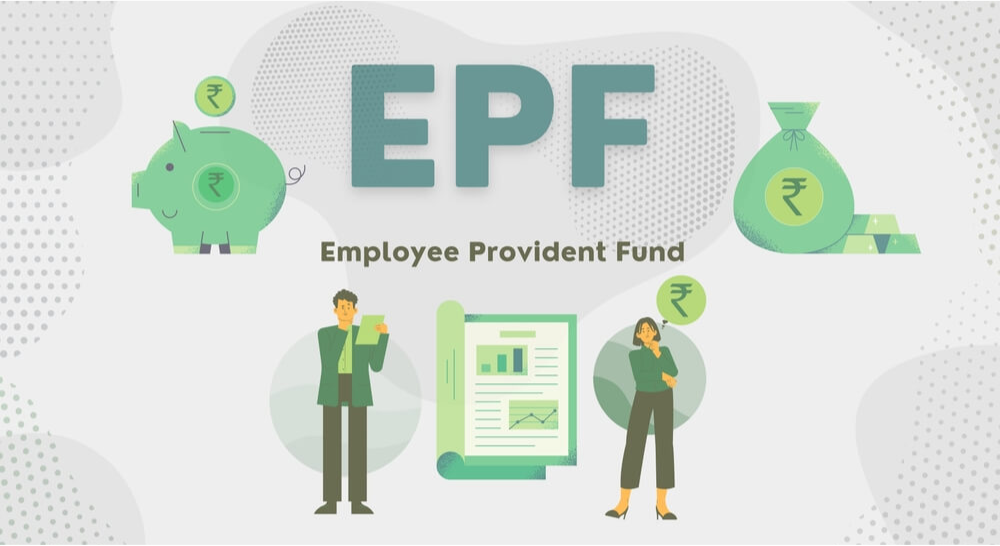 Updated on: December 12th, 2024 3:38 PM
Updated on: December 12th, 2024 3:38 PM
Section 147 of the Income Tax Act
Section 147 of the Income Tax Act plays a crucial role in ensuring that all taxable income is accurately reported and assessed. It provides the framework for the reassessment or recomputation of income that may have been overlooked or not reported to tax authorities, serving as a vital corrective measure. This section, along with related provisions, outlines the responsibilities of the Assessing Officer (AO) in identifying discrepancies, issuing notices, and conducting reassessments, thereby upholding the integrity of the tax system. In this article we will look into Section 147 of the Income Tax Act in detail.Section 147 of the Income Tax Act
Section 147 of the Income Tax Act allows for the reassessment or recomputation of income that may not have been reported to the tax authorities for various reasons. This provision serves as a corrective mechanism to address errors or omissions in income reporting. It outlines the powers and responsibilities of the Assessing Officer (AO) in conducting such assessments or reassessments and the procedures that follow. It's important to note that Section 147 references several other sections, which the AO must consider in conjunction with the guidelines established within this section.Explanation of Key Terms in Section 147
Understanding key concepts like "income escaping assessment," "assessment," and "reassessment" is crucial to grasp the details of Section 147 of the Income Tax Act.Income Escaping Assessment (IEA)
Income escaping assessment" refers to income that was either not reported in the Income Tax Return (ITR) or overlooked by tax officials during a specific assessment year. Several factors can lead to income escaping assessment, including:- Undisclosed Income: This occurs when a taxpayer fails to report part of their income in their ITR. Reasons for this can range from intentional non-disclosure to a misunderstanding of tax laws or simple oversight.
- Misreported Income: This happens when income is underreported due to errors in computation or intentional misreporting, leading to certain income sources being omitted from the ITR.
- Excessive Deductions and Reliefs: A taxpayer may claim deductions or reliefs that exceed the permissible limits, either due to a lack of understanding of tax regulations or with malafide intent.
- Incorrect Assessment: Even when income is correctly reported, errors in the assessment process can occur, resulting in a lower tax liability than what is actually owed.
Assessment and Reassessment
These terms refer to the processes used to determine and, if necessary, recalculate a taxpayer's correct tax liability.Assessment
Assessment is the process by which tax officials validate a taxpayer's Income Tax Return (ITR) to determine the appropriate amount of tax due. It involves a thorough examination of the reported income, deductions, and claims to ensure that the tax liability is correctly calculated according to the tax laws. Click here to learn more aboutSection 144B of Income Tax Act: Faceless Assessment
Reassessment
Reassessment, on the other hand, is the recalculation of a taxpayer's tax liability initiated by the Income Tax Department when there is reason to believe that certain income sources were not included in the original assessment. Reassessment can be triggered under various circumstances, such as:- Undisclosed Income: When a taxpayer fails to disclose a source of income in their ITR.
- Errors in Assessment: When there are mistakes in the initial assessment process, either on the part of the tax authorities or the taxpayer.
- Non-filing of Returns: When a taxpayer has not filed a tax return, but it is believed that taxable income was generated, leading to potential taxes and penalties due to non-reporting.
Types of Assessment
Section 147 of the Income Tax Act refers to different types of assessments, each serving a distinct purpose in the tax assessment process. These assessments include self-assessment, preliminary assessment, regular assessment, and special assessment.Self-Assessment
Self-assessment is the process where a taxpayer calculates their own tax liability based on the income earned during a financial year. The taxpayer then files an Income Tax Return (ITR) in the subsequent assessment year (AY). For example, if Mr. A earns an income of ₹20 lakh in FY 2022-23, he will self-assess his income, calculate the tax due, and file the ITR in AY 2023-24, paying the appropriate taxes. This initial calculation by the taxpayer is known as self-assessment.Preliminary Assessment
After a taxpayer file their ITR through self-assessment, the Income Tax Department conducts basic checks and validations. This preliminary assessment involves verifying the return for calculation errors or incorrect claims without conducting an in-depth review. It serves as the first level of scrutiny to ensure that the return is accurate on the surface.Regular Assessment
Following the preliminary assessment, a regular assessment is conducted. This involves a more detailed examination of the tax return and supporting documents by tax officials to ensure that all income has been accurately reported and that the correct amount of tax has been paid. Regular assessment is further divided into:- Scrutiny Assessment: A thorough examination of the return to verify the accuracy of the reported income and claims.
- Best Judgement Assessment: When the taxpayer fails to provide adequate information, the tax officer makes a determination based on the best available information.
Special Assessment
Special assessment refers to specific scenarios where additional scrutiny is required:- Income Escaping Assessment: This occurs under Section 147 when it is believed that some income has not been reported and has escaped the original assessment process.
- Assessment in Continuation of Search: Covered under Sections 153(A) - 153(C), this assessment is conducted following a search or seizure operation to reassess income and verify undisclosed assets or income.
Key Amendments Introduced in Section 147 by the Finance Act, 2021
The Finance Act 2021 brought significant changes to Section 147 and related provisions of the Income Tax Act. The key amendments include the replacement of Sections 147 - 149 with new Sections 147, 148, 148A, and 149, as well as the subsuming of Sections 153(A) - 153(C) under the revised Section 147.Introduction of Section 148A
A major amendment is the introduction of Section 148A, which requires the Assessing Officer (AO) to conduct an inquiry and give the taxpayer an opportunity to be heard before issuing a notice for reassessment. This procedural safeguard ensures that the AO has concrete and material facts, as provided by the taxpayer's response, to decide whether to proceed with reassessment. Also read: Section 148 of Income Tax ActRemoval of Discretion in Reassessment
Before this amendment, the AO could initiate reassessment if they had "reason to believe" that income had escaped assessment. This often involved a degree of discretion and subjective judgment. However, the new provisions mandate that the AO must rely on concrete facts and information rather than personal judgment. This change reduces the scope for discretion and potential bias in reassessment procedures, making the process more transparent and fair for taxpayers.Consolidation of Sections 153(A) - 153(C)
Sections 153(A) - 153(C), which dealt with assessments related to search and seizure cases, have been integrated into Section 147. This consolidation streamlines the assessment and reassessment process under a single, more coherent framework. These amendments aim to enhance the fairness and efficiency of the tax reassessment process, ensuring that taxpayers are given a fair opportunity to present their case before any reassessment action is initiated. Also read Double Taxation Relief – Sections 90, 90A, and 91 of the Income Tax ActAmendments to Section 147 by the Finance Act, 2022
The Finance Act 2022 introduced specific amendments to Section 147 of the Income Tax Act, particularly regarding the time limits for the assessment, recomputation, and reassessment of taxes reported to the Income Tax Department.Changed Time Limits for Assessment
- Up to AY 2017-18: The time limit for completing the assessment was set at 21 months from the end of the Assessment Year (AY) in which the income was first assessable.
- For AY 2018-19: The deadline was reduced to 18 months from the end of the relevant AY.
- For AY 2019-20: The time limit was further shortened to 12 months from the end of the relevant AY.
- For AY 2020-21: The time limit was extended back to 18 months from the end of the relevant AY.
- For AY 2021-22 onwards: The deadline was significantly reduced to 9 months from the end of the relevant AY.
Reassessment Procedure Under Section 147
Under Section 147 of the Income Tax Act, the following steps outline the reassessment procedure to be followed by the Assessing Officer (AO) when reassessing a taxpayer's income:Identifying Income that Escaped Assessment
The reassessment process begins when the AO identifies income that was not reported in the taxpayer's Income Tax Return (ITR) and has consequently escaped assessment. The "reason to believe" that income has escaped assessment must be based on specific evidence recorded in the taxpayer’s return, often arising from discrepancies noted during the regular assessment.Recording of Evidence
The AO must accurately record all material facts, representations, responses, and any additional supporting evidence provided by the taxpayer. Whether or not the AO initially believes that income has escaped assessment, these records must indicate that there is sufficient evidence to justify reopening the reassessment case.Obtaining Approval from Higher Authority
If the AO believes, based on the taxpayer's responses and recorded evidence, that income has indeed escaped assessment, they must seek approval from a higher authority before proceeding. Once approval is granted, the AO can issue a notice under Section 148 to the taxpayer, signalling the start of the reassessment process.Issuance of Notice
With the necessary approvals and material facts in place, the AO issues a notice to the taxpayer under Section 148. This notice informs the taxpayer that their case is being reopened for reassessment. Typically, the taxpayer is given 30 days to file a revised tax return in response to this notice.Filing of Revised Return
The taxpayer must address the specific concerns raised by the AO in the revised return, including any previously unreported or misreported income. This revised return should correct the issues identified in the original filing.Assessment by the AO
Upon receiving the revised return, the AO reviews it thoroughly. The AO may request additional evidence or clarification from the taxpayer as needed to ensure all concerns have been adequately addressed.Draft Assessment Order
If the AO determines that the taxpayer has additional tax liability based on the revised return and supporting materials, they prepare a draft assessment order. This draft is reviewed and approved internally by a higher official before proceeding.Issuance of Show Cause Notice
The AO issues a show cause notice to the taxpayer, giving them the opportunity to explain why the additional tax liability should not be imposed. This notice is an essential step in ensuring the taxpayer's right to respond.Hearing
A hearing is organized to allow the taxpayer to present their case before tax officials. The taxpayer can provide explanations and supporting documents to argue against the revised tax liability assessed by the AO.Final Assessment Order
After considering the taxpayer's case, the AO issues a Final Assessment Order. This order outlines the income that escaped assessment in the original return and specifies the revised tax liability, including any applicable penalties.Appeal by the Taxpayer
Once the Final Assessment Order is issued, the taxpayer has the right to appeal against the order before the tax authorities, typically within 30 days of receiving the order. This appeal process provides a further avenue for the taxpayer to contest the reassessment if they believe it to be incorrect.Other Related Provisions to Section 147
Sections 148 to 153 are closely linked to Section 147 of the Income Tax Act, collectively providing a comprehensive framework for the reassessment of income tax. Here's an overview of these related sections:Section 148: Issuance of Notice
Section 148 outlines the procedure for issuing a notice when income has escaped assessment. It requires the Assessing Officer (AO) to notify the taxpayer about the reassessment process. This notice serves as the formal initiation of reassessment and provides the taxpayer with the opportunity to respond.Section 148A: Safeguarding Taxpayer Rights
Introduced to protect the rights of the taxpayer, Section 148A ensures that before any notice under Section 148 is issued, the taxpayer is given an opportunity to be heard. This section mandates that the AO must conduct an inquiry and consider the taxpayer’s responses before proceeding with reassessment, adding a layer of transparency and fairness to the process.Section 151: Approval Matrix for Reassessment
Section 151 establishes the approval hierarchy required for passing reassessment and recomputation orders. It specifies that certain levels of authority must review and approve the reassessment actions, ensuring that decisions are well-considered and justified before being finalized.Section 149: Time Limits for Issuing Notices
Section 149 sets the time limits for issuing reassessment notices. Generally, a notice under Section 148 can be issued within three years after the relevant assessment year. However, there is an exception: if the AO possesses documentary evidence indicating that income chargeable to tax has been concealed, a notice can be issued up to 10 years after the relevant assessment year. This exception applies when there is clear evidence of unreported assets, expenditures, or financial records.Section 151A: Enhancing Technological Efficiency
Section 151A reflects the push towards modernizing tax assessments by reducing face-to-face interactions between taxpayers and tax authorities. It allows the Central Government to issue further directions to optimize resources, promote team-based assessments, and implement flexible jurisdiction arrangements. This section aims to streamline the reassessment process by leveraging technology and reducing the potential for bureaucratic delays.Section 152: Computation of Tax Liability
Section 152 clarifies that when reassessing income, the tax liability will be computed using the tax rates that would have applied had the income been correctly assessed in the original assessment. This provision ensures consistency and fairness in the recalculation of tax obligations.Rights and Remedies for Taxpayers
Taxpayers facing reassessment under Section 147 of the Income Tax Act have several legal rights and remedies available to them. These provisions empower taxpayers to challenge decisions made by tax authorities and ensure that the reassessment process is conducted fairly and in accordance with the law. Below are the key rights and remedies available:Filing of Objections
- Against the Issuance of Notice: Taxpayers have the right to object to the issuance of a notice under Section 148 if they believe it is unjustified. The grounds for such objections typically focus on whether the prerequisites for issuing the notice, such as the existence of a proper "reason to believe" on the part of the Assessing Officer (AO), have been met.
- Against the Assessment Order: Once the reassessment order is issued, taxpayers can file objections against any findings they disagree with. These objections are usually raised in response to the show cause notice and during the hearing, where the taxpayer presents their case.
Appeal to the Commissioner of Income Tax (Appeals)
Taxpayers can appeal to the Commissioner of Income Tax (Appeals) within 30 days from the date of the final reassessment order. The appeal must outline the grounds for contesting the reassessment and include supporting documents and evidence. The Commissioner has the authority to confirm, decrease, increase, or set aside the reassessment order after thoroughly reviewing the submissions and conducting a hearing.Further Appeal to ITAT
If a taxpayer is dissatisfied with the decision of the Commissioner of Income Tax (Appeals), they may further appeal to the Income Tax Appellate Tribunal (ITAT). This appeal must be filed within a specified time limit from the receipt of the Commissioner’s decision. The ITAT, a quasi-judicial body, will review the case in detail and issue an order that could favor either the taxpayer or the Income Tax Department.Other Legal Remedies
- Guidance from Higher Courts: Numerous judgments from high courts and the Supreme Court have interpreted and clarified the provisions of Section 147. These rulings set precedents that guide both taxpayers and tax authorities in applying this section.
- Notable Cases: Key cases that address the meaning of "reason to believe," the validity of reasons recorded for reassessment, and procedural requirements have been instrumental in shaping the enforcement of Section 147.
- Effect of Legal Case Laws: Legal case laws play a crucial role in protecting taxpayers’ rights against erroneous claims by tax authorities. These laws establish the framework within which the provisions of the Income Tax Act must operate, ensuring consistency and fairness in legal interpretations.
Conclusion
Understanding Section 147 and its related provisions is essential for taxpayers, as it governs the reassessment process and ensures that all income subject to tax is properly accounted for. The amendments introduced by recent Finance Acts have further refined the reassessment procedures, emphasizing transparency, fairness, and the use of concrete evidence. Stay compliant and avoid penalties with expert help from IndiaFilings. Our team ensures your income tax returns are accurate and timely. Ensure complete compliance with IndiaFilings!Popular Post

In the digital age, the convenience of accessing important documents online has become a necessity...

The Atalji Janasnehi Kendra Project that has been launched by the Government of Karnataka...

The Indian Divorce Act governs divorce among the Christian couples in India. Divorce...

When an individual has more than a single PAN card, it may lead to that person being heavily penalised, or worse,...

Employees Provident Fund (PF) is social security and savings scheme for employee in India. Employers engaged...


